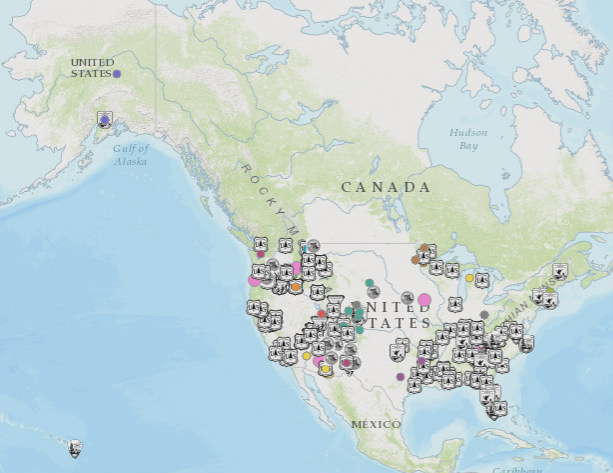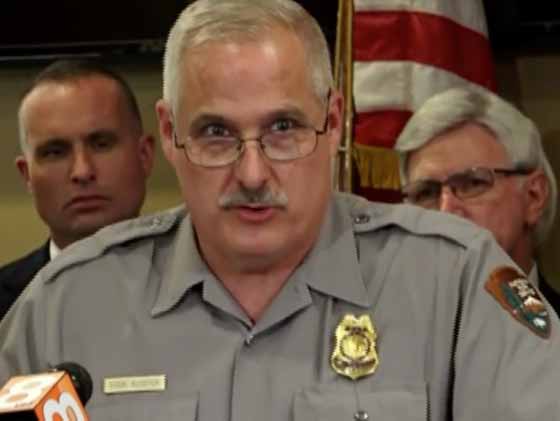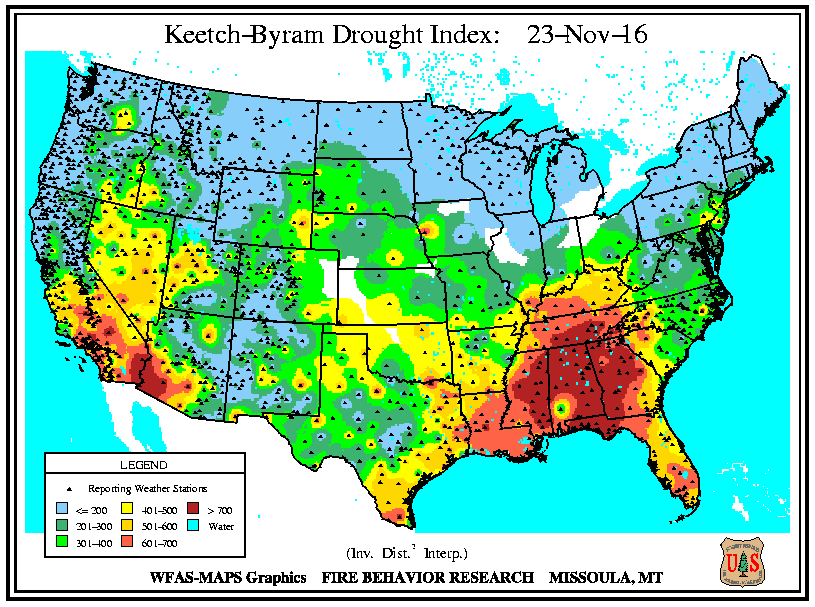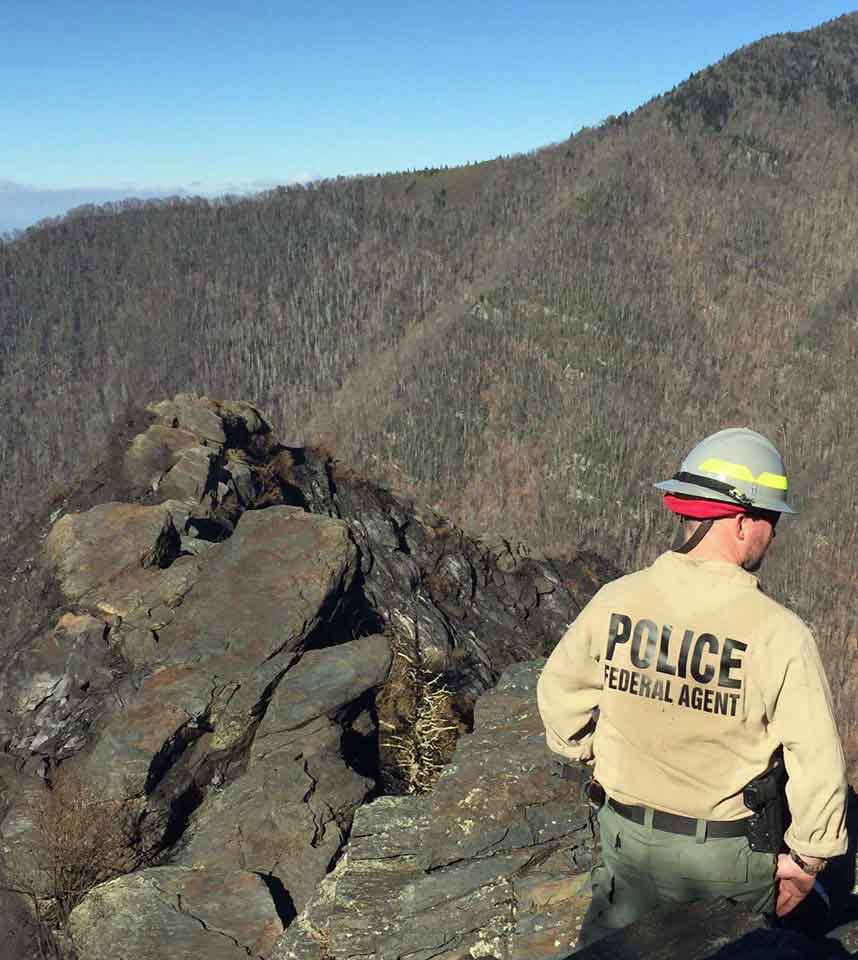Above: Chimney Tops 2 Fire November 27, 2016. Photo by Brett Bevill.
On December 13 the National Park Service delivered a verbal statement and released two documents about the Chimney Tops 2 Fire.
The fire killed 14 people and destroyed 2,013 homes and 53 commercial structures. An additional 244 homes were damaged.
At a news conference on Tuesday Great Smoky Mountains National Park (GRSM) Deputy Superintendent Clay Jordan read a 13 minute statement covering the day by day events from the time the fire was ignited by teenaged arsonists on November 23 to when it burned into Gatlinburg on November 28.
Mr. Jordan said, “On Saturday [November 27 two days before the fire burned into Gatlinburg] we requested a four-day near-term analysis from the U.S. Forest Service at the Rocky Mountain Research Station.” He went on to say, “Their analysis modeled low fire growth downhill over the next couple of days as the fire approached the containment boundary. This analysis did not forecast the behavior the fire generated on Monday.”
Mr. Jordan said Monday morning, November 29, spot fires created by lofted burning embers had occurred “as far as one-half to a mile from the main fire burning on Chimney Top.”
He concluded his presentation by saying:
We believe there is no way we could have controlled this fire prior to the wind event. The reality is we believe there is no number of firefighters or fire engines that could have stopped the spread of this fire in such extreme wind conditions.
We will continue to explore lessons learned from this incident and we appreciate the outpouring of support and resources that we have received from across the nation to help us fight this fire.
Below is a video recording of Mr. Jordan’s statement.
The documents released included a chronology and a .pdf of a presentation featuring maps. The presentation, a very large document, can be downloaded from Google Drive.
The chronology does not contain much more information than the analysis we published on December 5, 2016.
The presentation has a map showing the location of 911 calls, which is interesting.

From our interviews with people associated with the fire and the information released yesterday, it is clear that no action was taken by ground-based firefighters to actively suppress or stop the spread of the fire until Sunday, November 27, four days after the fire started. The activity that day involved constructing fire line and improving the natural boundaries of containment lines about half a mile away from the fire.
The chronology document released on December 13 implied that three large Type 1 helicopters dropped water on the fire “throughout the day” on Sunday November 27. But the information we obtained, which was confirmed by Mr. Jordan’s presentation yesterday, showed that the drops only occurred in the afternoon. This was the first time any direct suppression occurred on the fire up to that point.
That afternoon a Chinook Type 1 helicopter began dropping water on the fire, refilling at Fontana Lake 13 miles to the southwest, according to a source we talked to who didn’t want their name disclosed because they were not authorized to speak on the subject. The helicopter worked until it had to refuel and then two other Type 1 helicopters took its place until dark. Sunset that day was at 5:21 p.m. which would have allowed them to drop on the fire until 5:51 p.m., 30 minutes after sunset. This 26-mile round trip to refill with water greatly reduced the amount of water delivered to the fire, compared to how much could have been dropped if a closer water source had been used.
During the previous four days no nearby helicopter water sources were identified or created. Often on structure and wildland fires portable, collapsable water tanks are quickly set up for engines or helicopters to draft from or dip into with their buckets. Some of the larger tanks, such as the Heliwell, can hold almost 15,000 gallons. These tanks can be kept full if connected to a fire hydrant or filled with a water tender shuttle.
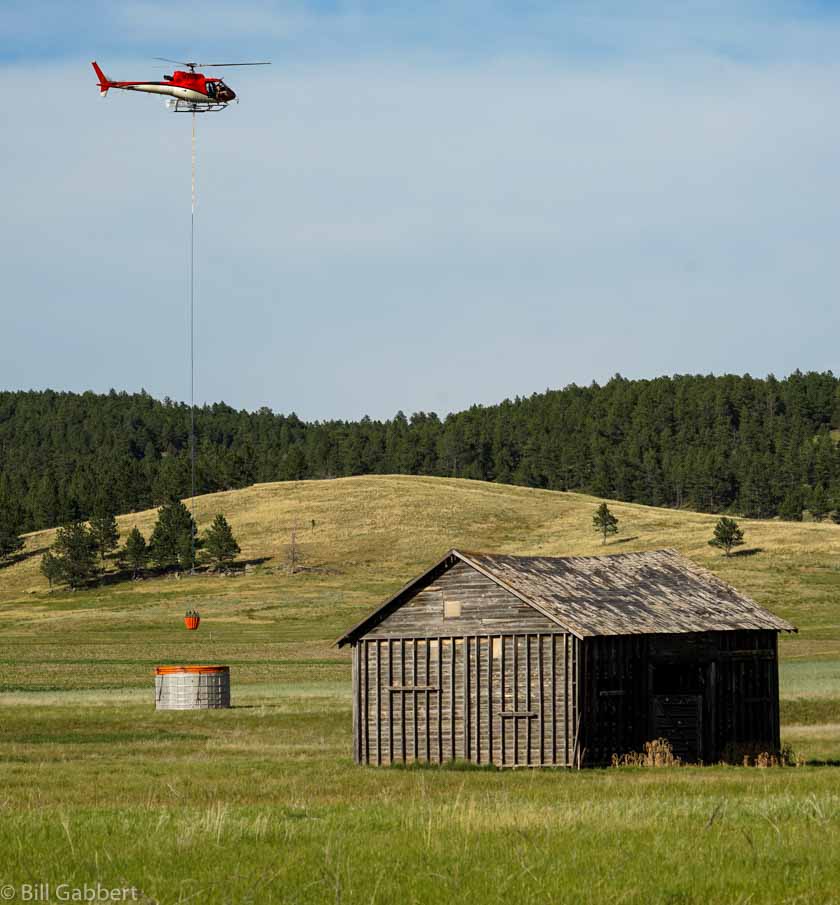
If a good water source had been created or identified on day two of the fire and helicopters had been ordered then instead of day five, hundreds of thousands of gallons of water could have been dropped on the fire in the four days before the wind increased on Monday, November 28.
Aircraft dropping water or fire retardant on a fire cannot put it out. However, if huge amounts of water are applied to a relatively small fire in a “wash the fire off the hill” approach, it can have a very positive effect.
Under normal circumstances limited amounts of liquids dropped from the air can be most effective if firefighters on the ground can move in quickly to take advantage of the short term change in fire behavior by constructing firelines, stopping the spread at that location. In this case, there were no firefighters in a position to take direct action.
For two weeks in numerous documents and presentations the NPS has been saying that wind gusts up to 87 mph were recorded at the Cove Mountain weather station 8 miles northwest of the fire’s origin and 4.5 miles west of downtown Gatlinburg. We have been attempting to obtain a copy of the data recorded by that station before it shut down at about 9 p.m. on November 28 when it lost electrical power. On December 15 we were told by GRSM spokesperson Dana Soehn that the data will not be released for at least two to three months because it has to go through a quality control process by multiple agencies. So in other words, they are not sure the data is accurate, but are very comfortable cherry picking one number and repeating it over and over.
However, weather data from numerous other stations is readily available.
At 2 a.m. Monday November 28, the day the fire burned into Gatlinburg, the wind speeds recorded at the Indian Grave weather station 18 miles west of the fire began increasing and the direction became more consistently out of the south and southwest. Until 1 p.m. sustained speeds were 4 to 6 mph with gusts at 12 to 19 mph. Between 2 p.m. and 6 p.m. they increased to 7 to 15 mph with gusts of 22 to 32 mph — all generally out of the south, blowing toward Gatlinburg. From 7 p.m. until midnight sustained winds were at 13 to 17 mph with gusts from 34 to 49.
This data from Indian Grave was not very different from the forecast issued the day before, Sunday November 27 at 7:29 a.m. That Spot Forecast, specifically for the fire area, predicted strong winds all day on Monday — at 7 a.m. 12 mph gusting to 25 and increasing throughout the day to 20 mph gusting to 40 by 6 p.m.
We were not able to find a Spot Forecast for the fire that was requested or issued on Monday, November 28.
The highest wind speeds reported by the National Weather Service’s Local Storm Report Information system in that part of Tennessee on November 28 were gusts of 56 and 60 mph in Bradley and Sevier Counties, respectively.
Below is a copy of the Spot Weather Forecast issued at 7:20 a.m. Sunday November 27, 2016, and following that, data from the Indian Grave weather station:
Continue reading “NPS releases information about the Chimney Tops 2 Fire”



